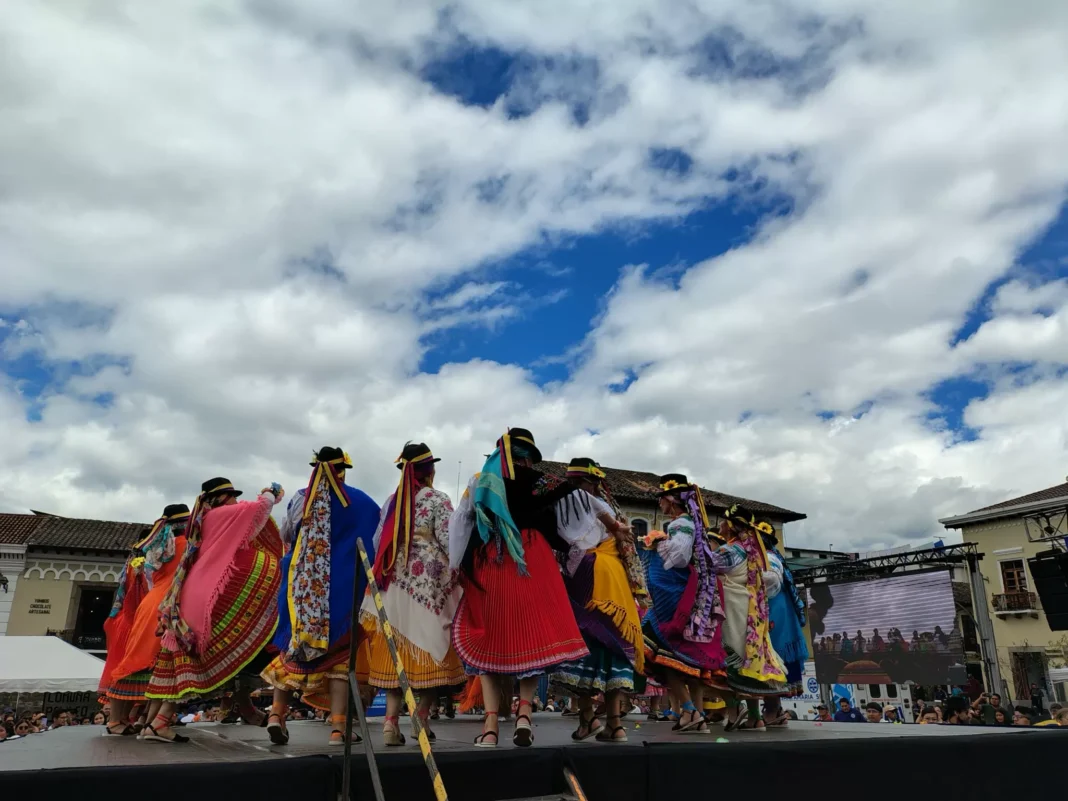Inti Raymi, also known as the Festival of the Sun, is a vibrant and colorful celebration that takes place in the Andean countries of South America. It is a time when the indigenous people come together to honor their cultural heritage and pay tribute to the sun god, Inti. This important festival is a revival of the people’s history and is a symbol of their resilience and resistance. In this 50th episode of Stories of Resistance, we delve into the significance of Inti Raymi and its impact on the Andean communities.
The origins of Inti Raymi can be traced back to the Inca Empire, which ruled over a vast territory in South America from the 13th to the 16th century. The Incas were a highly advanced civilization with a rich culture and traditions. They worshipped the sun as their main deity and believed that it was responsible for their prosperity and well-being. Inti Raymi was a way for them to express their gratitude and seek blessings from the sun god.
However, with the arrival of the Spanish conquistadors in the 16th century, the Inca Empire was conquered and their traditions and beliefs were suppressed. The Spanish colonizers imposed their own religion and culture, and the indigenous people were forced to abandon their practices. But despite this, the spirit of Inti Raymi lived on in the hearts of the Andean communities.
For many years, the celebration of Inti Raymi was banned by the Spanish authorities. But in the 1940s, a group of indigenous leaders and activists came together to revive this important festival. They saw it as a way to reclaim their cultural identity and resist the oppression of the colonizers. And so, Inti Raymi was reborn as a symbol of resistance and a celebration of indigenous culture.
Today, Inti Raymi is celebrated on June 24th, which coincides with the winter solstice in the Southern Hemisphere. It is a time when the sun is at its lowest point in the sky, and the Andean people believe that it needs to be revitalized and strengthened. The festival is a three-day event, with each day having its own significance and rituals.
The first day, known as Qorikancha, is dedicated to the sun god Inti. It is a day of purification and offerings, where the people gather at the Temple of the Sun in Cusco, Peru, to pay homage to Inti. The second day, known as the Main Day, is the most important and spectacular day of the festival. It begins with a grand procession, where the Inca king, dressed in traditional attire, leads the people to the Sacsayhuaman fortress. Here, a reenactment of the ancient Inca ceremony takes place, with offerings and sacrifices made to the sun god. The day ends with a feast and traditional dances and music.
The final day, known as the Farewell, is a time for reflection and gratitude. The people gather once again at the Temple of the Sun to thank Inti for his blessings and to bid farewell to the festival. It is a bittersweet moment, as the people know that they must wait another year to celebrate Inti Raymi again.
Inti Raymi is not just a festival, but a way of life for the Andean communities. It is a reminder of their rich cultural heritage and a celebration of their resilience and resistance against oppression. Through this festival, they have been able to preserve their traditions and pass them down to future generations.
Moreover, Inti Raymi has also become a major tourist attraction, drawing people from all over the world to witness this vibrant and unique celebration. This has not only brought economic benefits to the Andean communities but has also helped in promoting their culture and raising awareness about their struggles and resilience.
In conclusion, Inti Raymi is a testament to the strength and perseverance of the Andean people. It is a celebration of their cultural history and a symbol of their resistance against oppression. As we mark the 50th episode of Stories of Resistance, let us remember the importance of preserving and honoring our cultural heritage, and the role it plays in shaping our identities. Let us also celebrate the Andean communities for their determination to keep their traditions alive and for inspiring us to never forget our roots.


